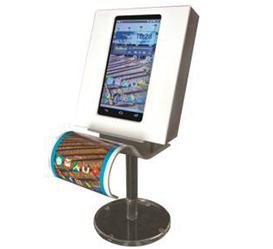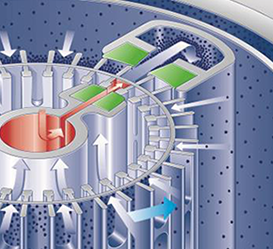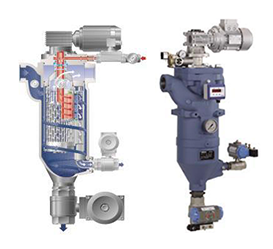2019-10-14

Initial Situation
Electrically conductive materials play a key role for curved, 3D or foldable displays in the form of printed electronics. The materials used for this must have sufficient mechanical flexibility. Conductive polymers are long chains of molecules containing identical units that are linked together. In order to become electrically conductive,the polymer must imitate a characteristic of metals. In order for a current to be able to flow, there must be electrons which can move freely (as there are in metals), and which unlike in most materials are not fixed to atoms. Conductive polymers are used for antistatic equipment, as electrodes, and as functional layers in liquid crystal screens and OLED displays as well as in organic photovoltaic systems. Our customer, a technology group based in Hanau, provides an ideal solution for this in the form of conductive polymers which can be used in touch-sensitive touch panels. The polymer material is suitable for use as an electrode in touch screens and printed electronics.

Challenge
Our customer has a large portfoloio of materials and technologies for use in printed electronics. In the filtration of polymer solutions, the FG automatic backflush filter that is used provides reliable cleaning of the filter surface through temporary and / or partial flow reversal. The 3-stage cascade solution that was previously used was very timeconsuming and expensive to operate. In order to achieve the required filtration quality, separation was carried out using a filter bag, a filter candle, and a modular filter.

Information
Positive side effect: Previously, silicon and aluminium components were dissolved into the cascade from the filter modules, and this may affect the performance of
the polymers. The use of FG’s technology enabled the concentration of aluminium and silicon to be reduced to 0.00 ppm.

Solution
The AF 173 test filter that is used features pulsating external pressure segment cleaning in a continuous filtrate flow, and it provides automatic cleaning of the filter elements and back-flushing with demineralized water. The filter element rotates through an integrated wash station where through the application of externally supplied cleaning medium and pressure the filter fabric is backrinsed and washed into a collecting duct that leads to the outside. The backflush nozzle and the backflush duct are sealed off from the filter chamber by press-fitted sliding sealing stripes.

Customer Value
Our solution provides low life cycle costs because no filter material is consumed and less manual handling as there is no longer any need to change the module, bag and candle. Further advantages are significantly reduced waste, because the rinsed materials can be directly fed into the wastewater treatment system and less space required due to previous filter solution requires considerably more operating space than the FG test filter that is used.